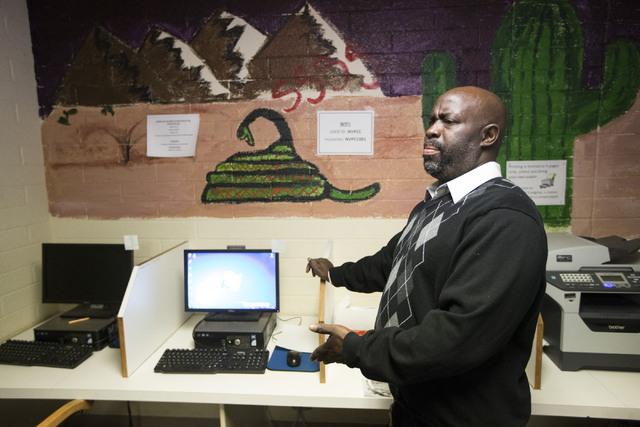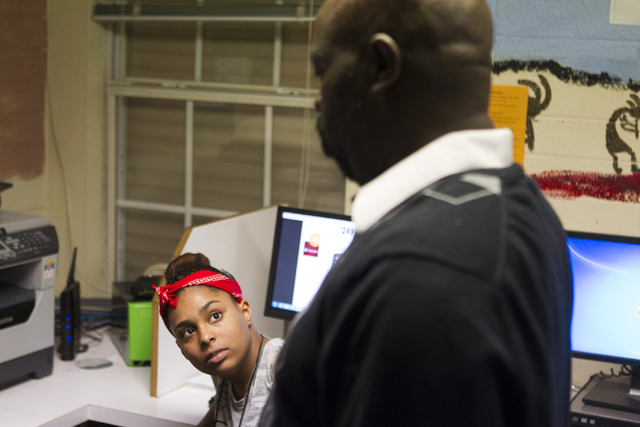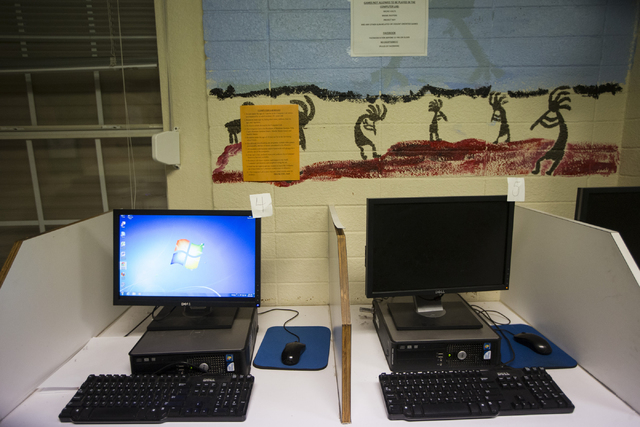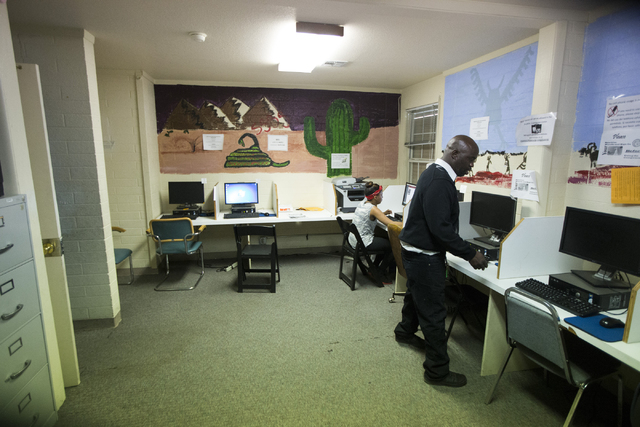CCSD working to give students access to more digital technology
For children trying to learn in a digital age, access to technology is almost as vital as air.
Getting by without can be nearly impossible. But access to Wi-Fi or other modern technology may be limited by where people live.
“We tend to take these things for granted,” says Tracey Torrence, supportive services director for the Southern Nevada Regional Housing Authority.
While living in public housing, people don’t necessarily have Internet access. But many organizations are aware — and in some cases addressing — what is known as the digital divide.
Torrence says the housing authority has created options for people who need Internet access but lack home computers.
Several years ago, with help from the Las Vegas Urban League, the housing authority received a $150,000 grant to open computer labs at most of their properties.
Frederick Bousley, resident council president of the Sherman Gardens public housing community, monitors the computer lab for the residents who need it.
Monday through Friday, the lab is opened to allow anything from schoolchildren doing homework to adults searching for jobs online.
Although Sherman Gardens has the computer center, children can’t access it all the time. Bousley usually locks the lab by 4 p.m. Students usually get out of school around 2:30 p.m., meaning their lab time is limited.
“If we could get another hour or two, maybe open until 6 p.m., that would be great,” Bousley says. “I think kids would come in.”
Jesse Welsh, academic manager of innovative learning environments at the Clark County School District, says the school district has worked to bridge the digital divide.
“Students have gotten to a place where they don’t know something, they can just Google it,” Welsh says. “But those who don’t have Internet access can’t do that. It’s become as essential as air.”
The district launched the e3: Engage, Empower, Explore Project, which works with at-risk schools to ensure students have access to tablets and other technology they might not be able to use otherwise.
“We do a lot of work with the parents to make sure they understand what they are signing up for,” Welsh says.
If the device is lost or damaged, the family must replace it — but Welsh says this has rarely happened.
Garside Junior High School students David Cardenas and Saray Maldonado say having tablets has helped them become more organized and enhance their learning.
“Unlike a textbook, you know the information you can pull up isn’t outdated,” Cardenas says. “But you can also pull up more than just written examples. You can find videos or tutorials. That’s how I learn.”
When the Wi-Fi isn’t the best for Maldonado, she resorts to doing some assignments on her cellphone.
Even if students can take the tablets home to work on some assignments, there are still many things they aren’t able to complete without Internet access. But Welsh says the Internet access problem isn’t as pronounced as some people may think.
“We have done surveys of our students, and it’s about 5 percent,” he says. “It’s still 5 percent, but not what you would think.”
Welsh says many district schools have computers in the library for students who need to print out homework or research items after school.
“We are trying to set up as many safeguards as we can.” Welsh says.
The district has worked with community partners and businesses around Las Vegas to set up free Wi-Fi areas for students to use after school.
Some school districts around the country have tried offering Wi-Fi on school buses, even parking the buses near public housing so students could access Wi-Fi from home. But Welsh says the district found the idea infeasible.
“It wasn’t cost efficient for the state,” he says. “The other problem was cell towers and not getting good connectivity.”
The Department of Housing and Urban Development and the Obama Administration have been examining addressing Internet access in public housing.
“The Secretary has a saying,” says Ophelia Basgal, a HUD spokeswoman. “The Department of Housing and Urban Development is the department of opportunity.
“There are all kinds of studies out there about Internet access,” Basgal adds.
The department launched ConnectHome last year to give free Internet access to public housing. The pilot program launched in 28 cities.
To join the program, cities had to apply and show a vested interest in addressing the digital divide.
Basgal says HUD is collecting data from the pilot program to assess the benefits of ConnectHome. From there, it can determine whether the program will expand.
Las Vegas so far isn’t on the radar to have ConnectHome come to public housing.
Contact reporter Michael Lyle at mlyle@reviewjournal.com or 702-387-5201. Follow @mjlyle on Twitter.
RELATED
CCSD schools listen to Obama, add more computer classes




















